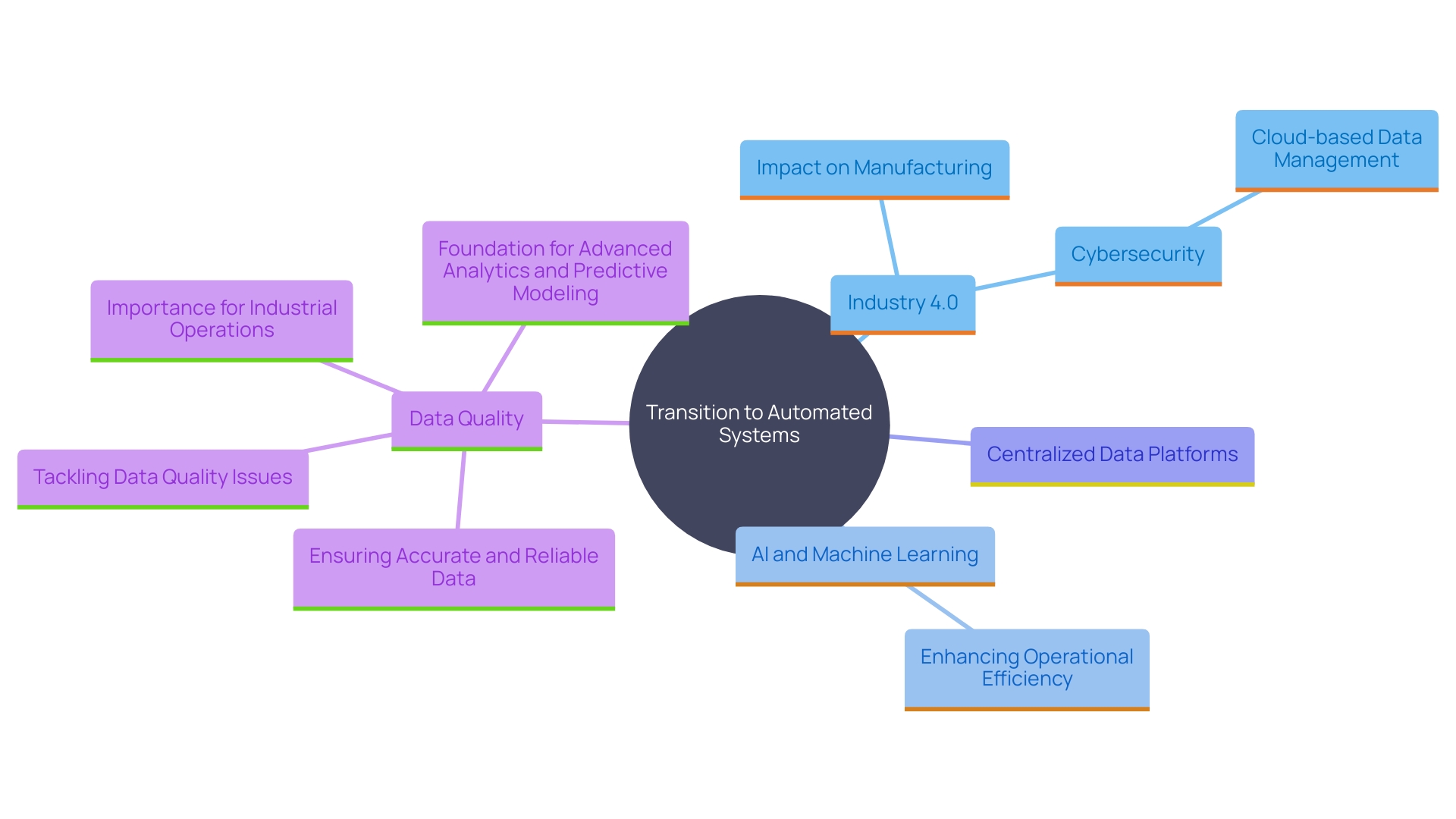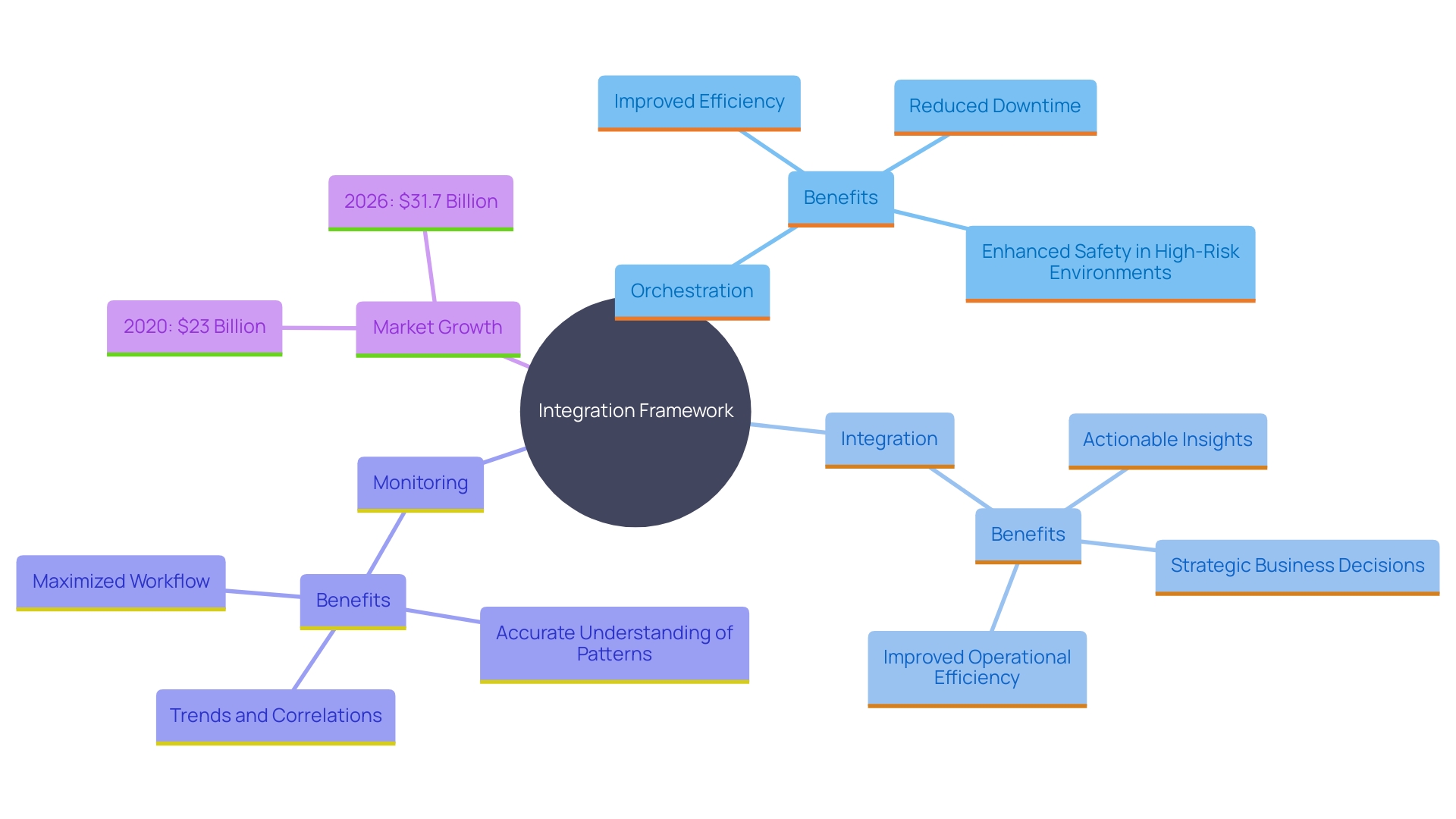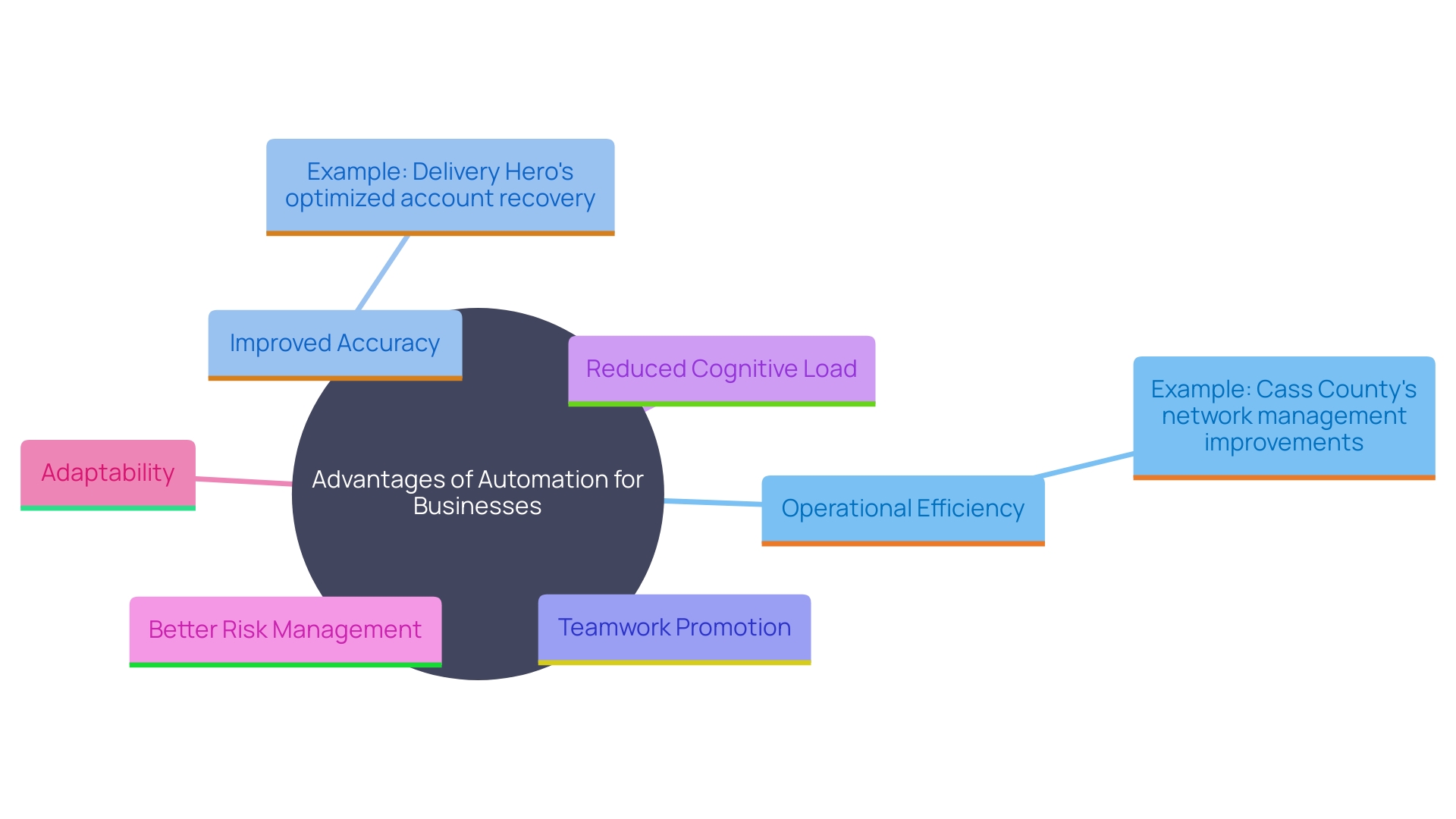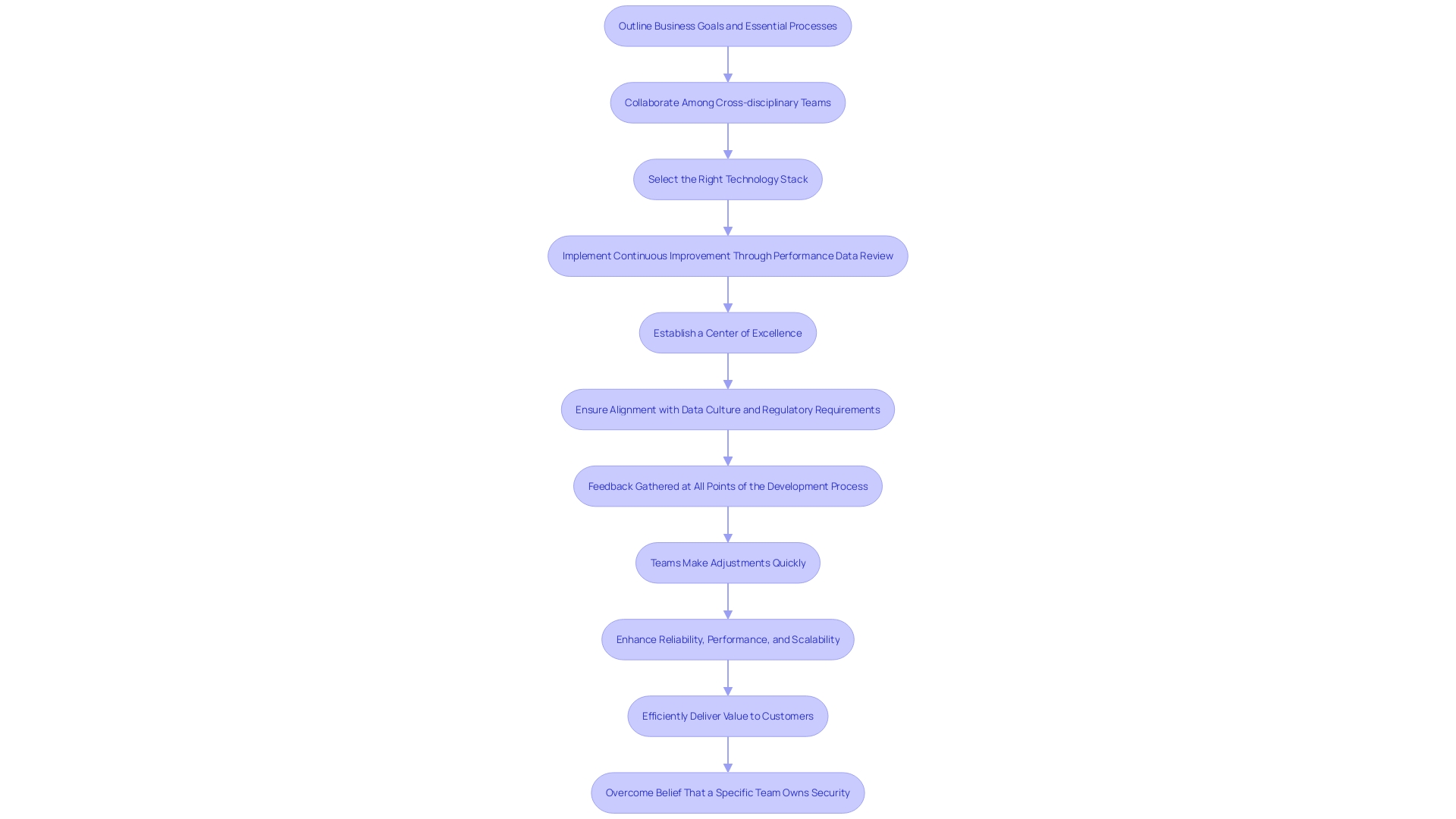Introduction
The transition from traditional data management methods to automation fabrics marks a significant transformation in how businesses utilize technology. Automation fabrics unify various automation tools and technologies, creating a seamless framework that enhances operational efficiency and responsiveness to changing business landscapes. This shift is part of the broader Industry 4.0 movement, where the digital transformation of manufacturing operations and the deployment of autonomous systems are becoming the standard.
These systems, powered by massive datasets through machine learning, enable comprehensive predictions across the manufacturing process. The integration of AI and centralized data platforms in manufacturing is not merely a trend but a crucial evolution towards more intelligent and efficient production environments. For instance, the manufacturing industry, as highlighted during the Automate 2024 show, is leveraging AI to revolutionize procurement and design processes, significantly reducing redundancy and inefficiencies.
The necessity for systems that centralize and utilize historical data is becoming increasingly evident as companies strive to optimize operations. This approach not only reduces manual efforts but also significantly enhances overall productivity, aligning with the operational goals focused on customer satisfaction and revenue growth. Furthermore, the adoption of cloud-based systems for data management underscores the importance of cybersecurity measures to protect against digital threats, ensuring the resilience and security of sensitive data.
The Evolution from Data Fabrics to Automation Fabrics
The shift from traditional data management techniques to automated systems signifies a major change in the way companies leverage technology. Automation fabrics unify various automation tools and technologies, creating a seamless framework that enhances operational efficiency and responsiveness to changing business landscapes. This change is part of the wider Industry 4.0 movement, where the digital transformation of manufacturing operations and the implementation of autonomous technologies are becoming the norm. These frameworks, fueled by extensive datasets via machine learning, allow for thorough forecasts throughout the manufacturing workflow. The integration of AI and centralized data platforms in manufacturing is not merely a trend but a crucial evolution towards more intelligent and efficient production environments. For instance, the manufacturing industry, as highlighted during the Automate 2024 show, is leveraging AI to revolutionize procurement and design processes, significantly reducing redundancy and inefficiencies. ‘The necessity for structures that centralize and utilize historical data is becoming increasingly evident as companies strive to optimize operations.’. This approach not only reduces manual efforts but also significantly enhances overall productivity, aligning with the operational goals focused on customer satisfaction and revenue growth. Furthermore, the adoption of cloud-based systems for data management underscores the importance of cybersecurity measures to protect against digital threats, ensuring the resilience and security of sensitive data.

Key Components of an Automation Fabric
A strong integration framework combines several crucial elements: orchestration, integration, and monitoring resources. Orchestration software enhances the coordination among different automation activities, ensuring seamless workflows. Integration instruments connect the divide between various frameworks, establishing a unified operational environment. Monitoring tools offer real-time insights into automated processes, empowering organizations to make data-driven adjustments and optimizations. For instance, remote monitoring setups can significantly decrease downtime, as integrators can rectify errors and modify parameters from any location, enhancing efficiency without being physically present. The global market for such systems is projected to grow from $23 billion in 2020 to $31.7 billion by 2026, reflecting their increasing importance in modern operations. Additionally, these tools not only improve productivity but also address safety concerns in high-risk environments, such as metalworking facilities, by enabling remote control and error correction.

Benefits of Implementing an Automation Fabric
Establishing an automated framework provides various advantages for contemporary businesses. By automating repetitive tasks, it enhances operational efficiency and frees up resources for more strategic activities. For example, Cass County, North Dakota, employed mechanization to improve network management and reduce downtime, significantly enhancing service delivery. Likewise, Delivery Hero optimized their account recovery procedure, saving considerable time and enabling employees to concentrate on their primary duties.
Automation also improves accuracy by minimizing human error, which is crucial in maintaining high standards in operations. ‘The incorporation of various mechanization tools promotes teamwork across departments, resulting in quicker decision-making and enhanced flexibility in reacting to market changes.’. As emphasized by industry specialists, utilizing the most recent software for workflow enhancement can make teams more efficient, lower expenses, and boost competitiveness.
Furthermore, standardizing mechanization methods decreases cognitive load on teams, enhancing skill transferability and reducing the barrier to entry. This unified strategy supports the enterprise’s broader business objectives, enabling better risk management and adaptability to new technologies, as seen in the transformative impact on Cass County’s and Delivery Hero’s operations.

Best Practices for Building an Efficient Automation Fabric
To create an effective automated system, organizations must first clearly outline their business goals and pinpoint the essential processes for mechanization. This approach ensures alignment with overall business goals and can significantly enhance productivity and competitiveness. Working together with cross-disciplinary groups is vital to effectively incorporate technological strategies across various areas, including networking, compute, and virtualization. According to expert findings, aligning these diverse teams towards a common objective is crucial for overcoming organizational silos and fostering a unified approach to automation.
Choosing the right technology stack is another critical step. It should support scalability and flexibility to adapt to future needs. As the industry moves towards more advanced technological solutions like AI and Machine Learning, the chosen tools must enable seamless integration and evolution. Bosch’s innovative approach to sustainability with their solid oxide fuel cell (SOFC) system exemplifies how leveraging deep engineering expertise can drive efficiency and innovation.
Regularly reviewing and optimizing automated processes based on performance data is vital. This continuous improvement loop helps maintain efficiency and adapt to evolving business needs. The successful adoption of these strategies involves establishing a Center of Excellence (CODE) to provide governance and support across the organization, ensuring that technological efforts are aligned with the company’s data culture and regulatory requirements. By adhering to these principles, organizations can navigate the complexities of automation and achieve significant operational improvements.

Conclusion
The transition to automation fabrics represents a pivotal advancement in modern data management, driven by the need for enhanced operational efficiency and responsiveness. By unifying various automation tools, organizations can streamline processes and adapt more readily to the evolving demands of the market. This integration is not just a response to technological trends; it is a fundamental shift that enables businesses to harness the power of AI and machine learning, leading to smarter manufacturing practices and improved productivity.
Key components of an automation fabric—such as orchestration, integration, and monitoring tools—play a crucial role in facilitating this transformation. These tools not only optimize workflows and enhance collaboration but also provide real-time insights that empower organizations to make informed decisions. The benefits of implementing such systems are evident in case studies from diverse industries, where automation has led to increased efficiency, reduced costs, and improved service delivery.
To maximize the potential of automation fabrics, organizations should adopt best practices that include clearly defined objectives, cross-functional collaboration, and the right technology stack. By establishing a Center of Excellence and committing to continuous improvement, businesses can ensure that their automation strategies align with overarching goals and adapt to future challenges. Embracing these principles will not only drive operational improvements but also position organizations for sustained success in an increasingly automated landscape.

